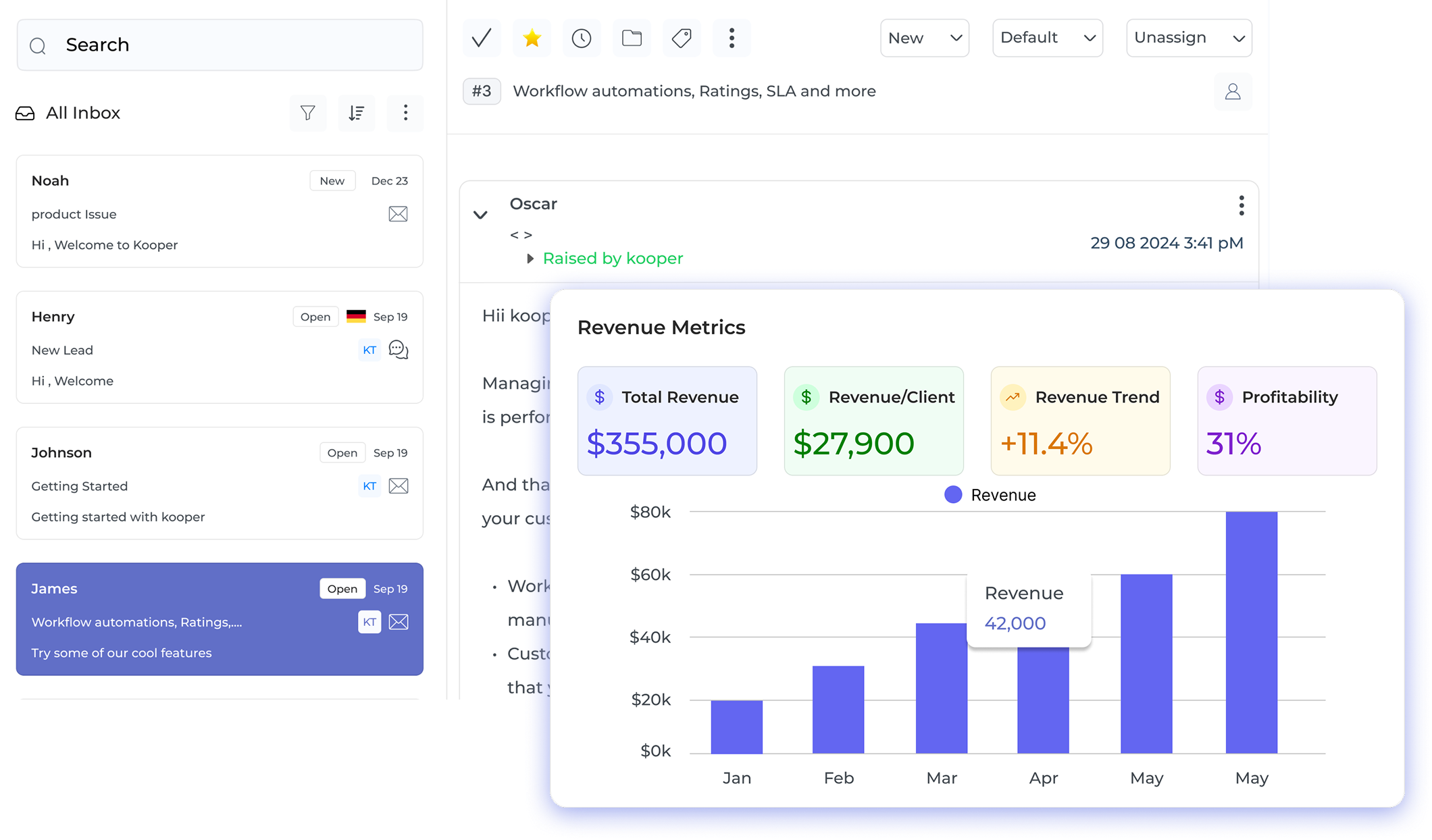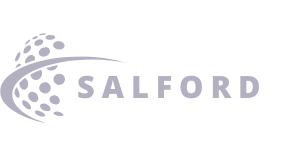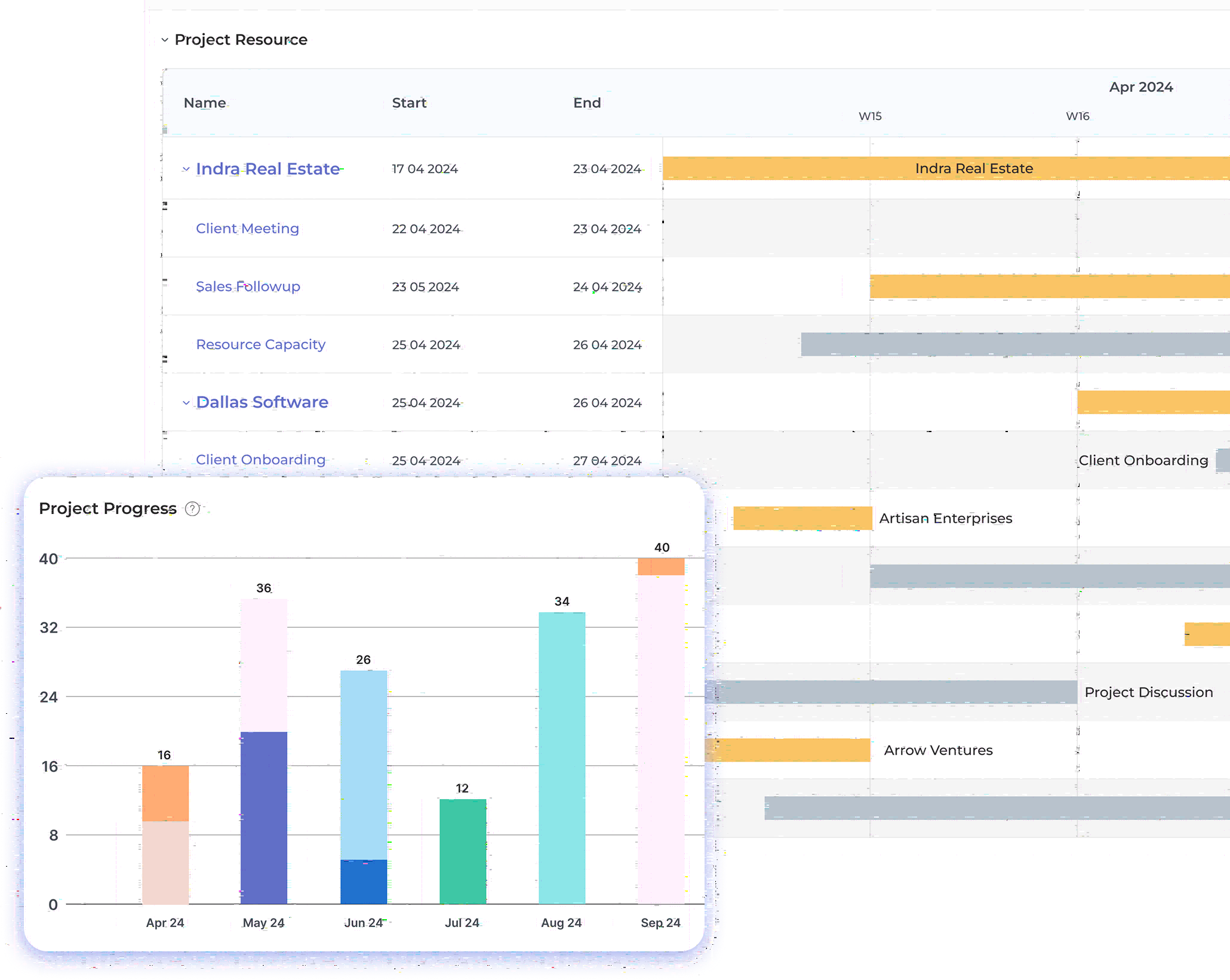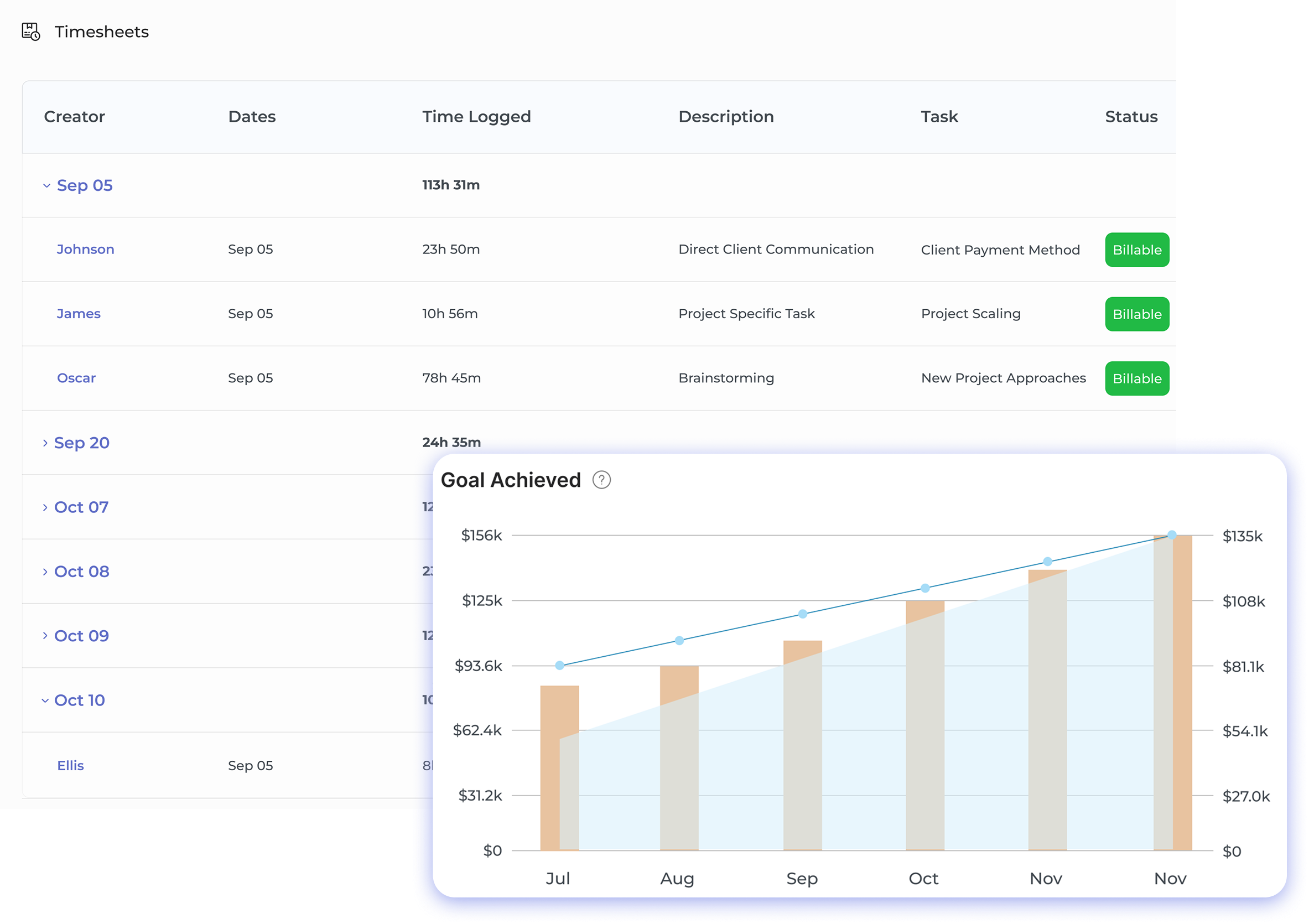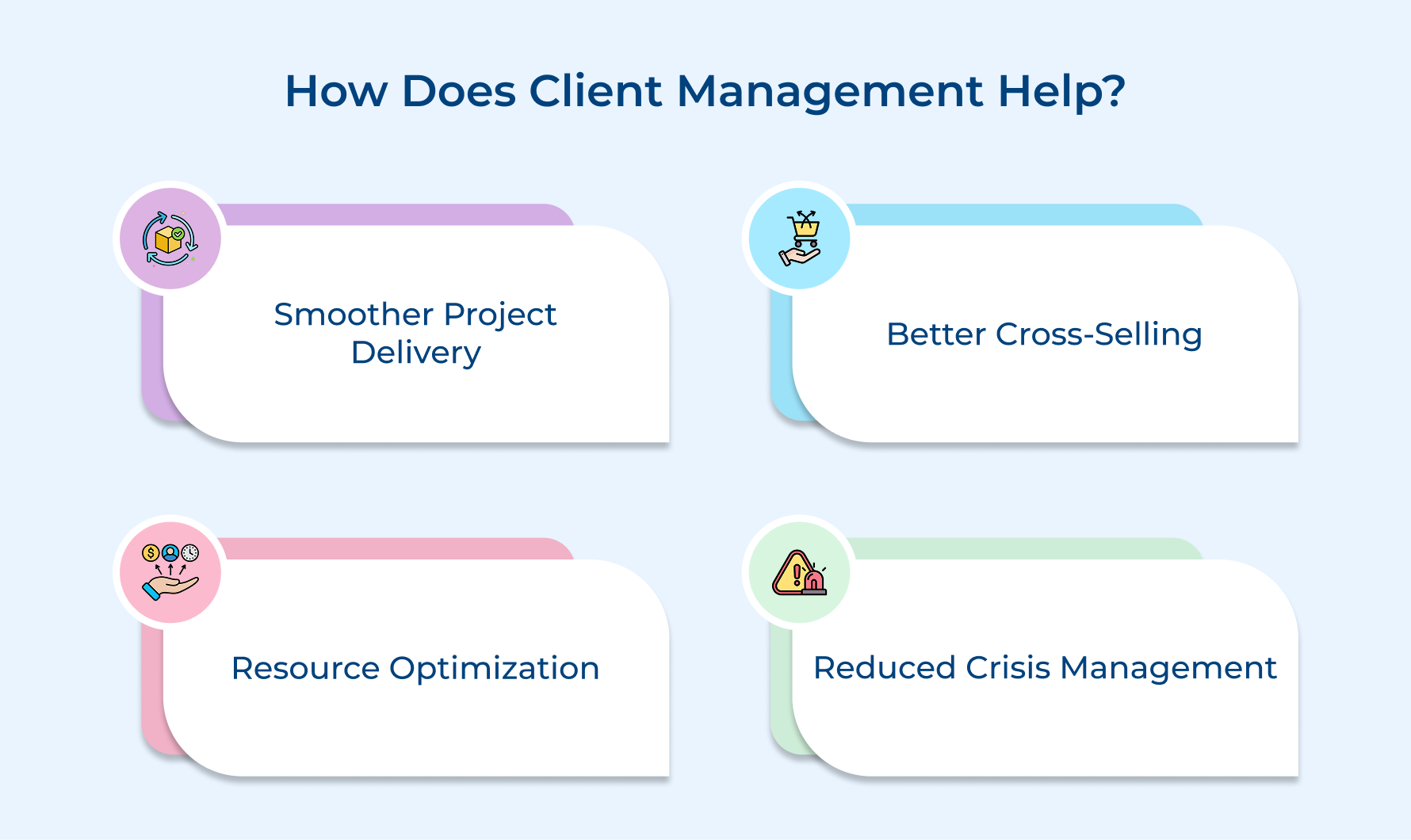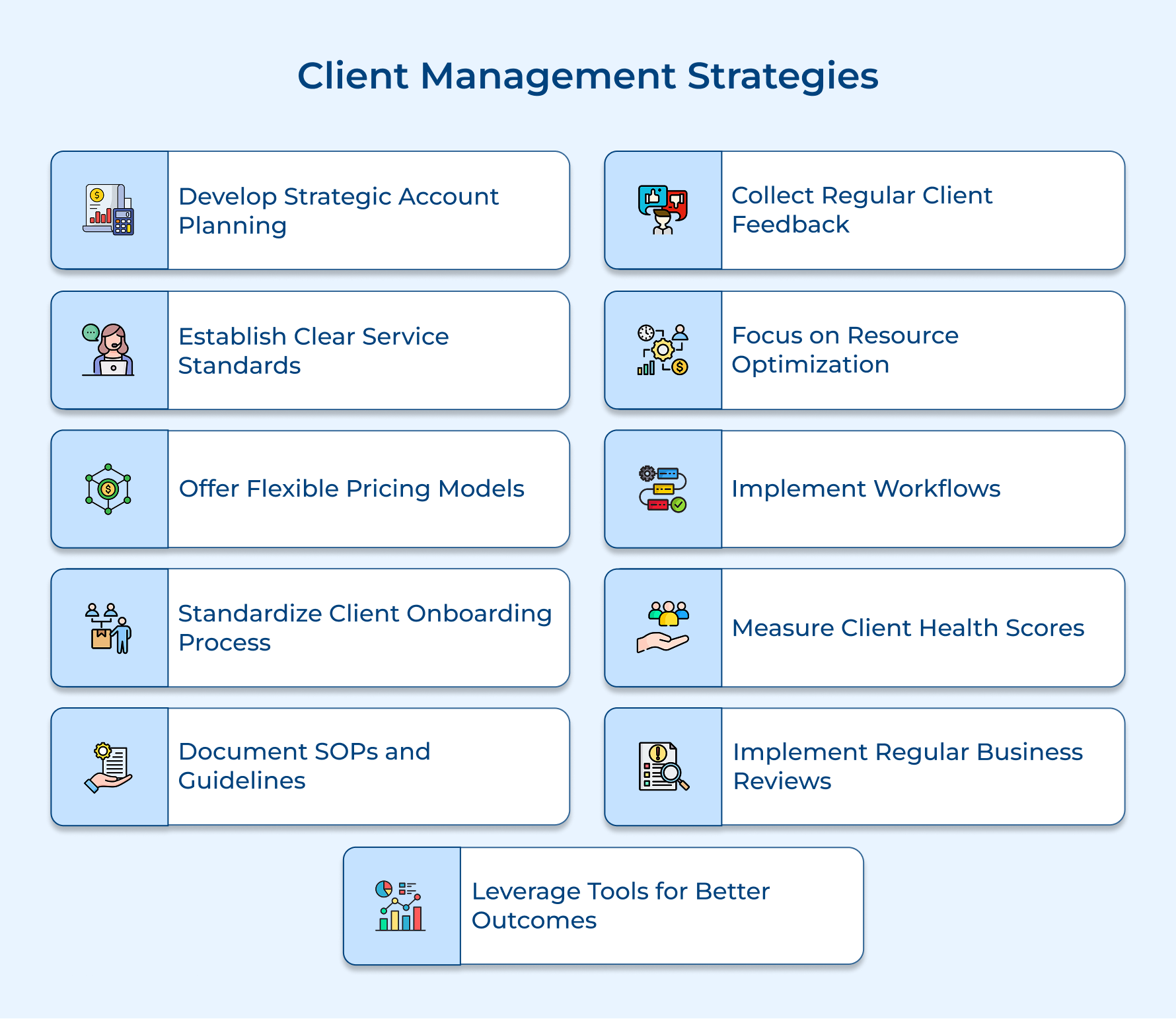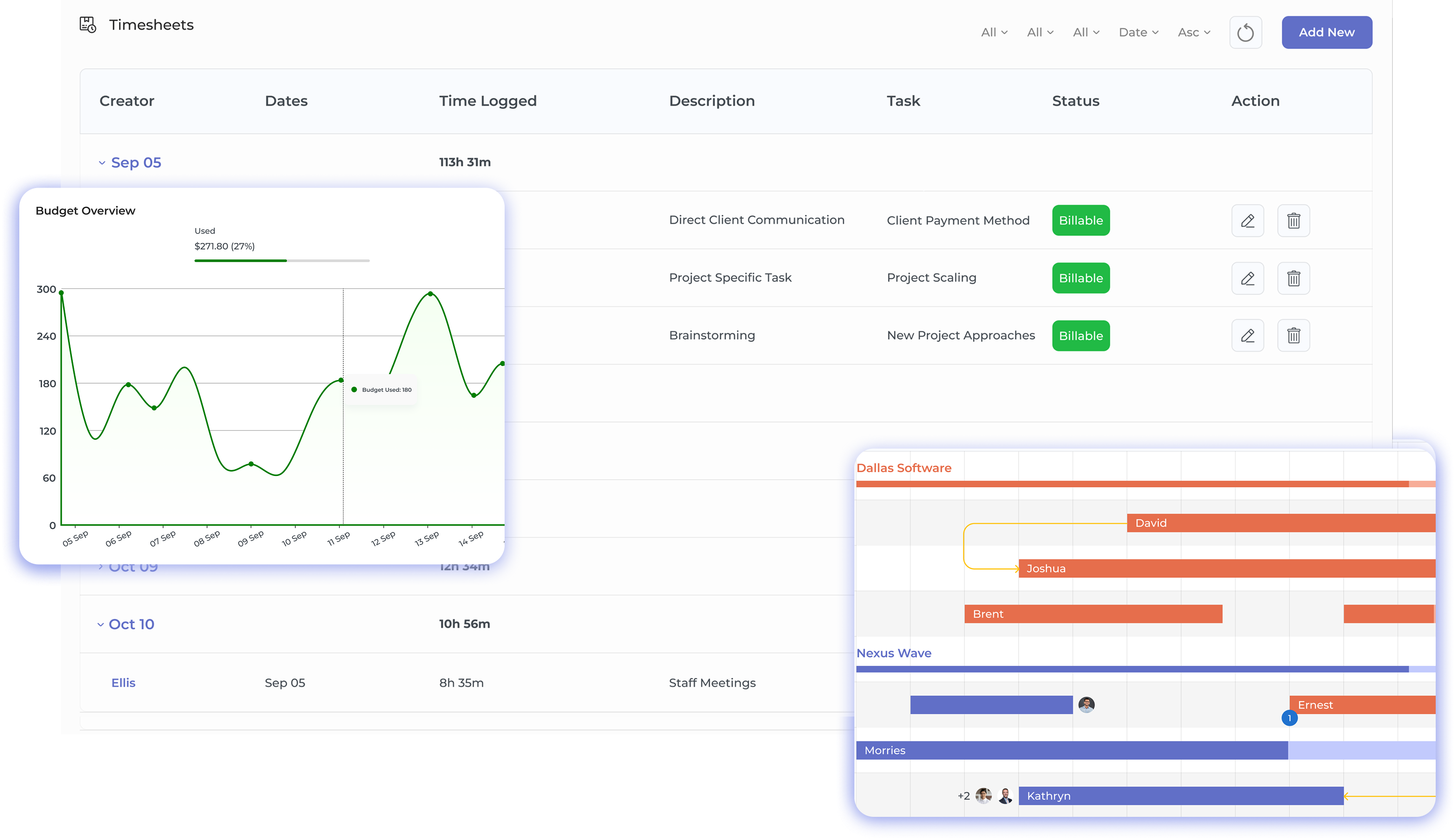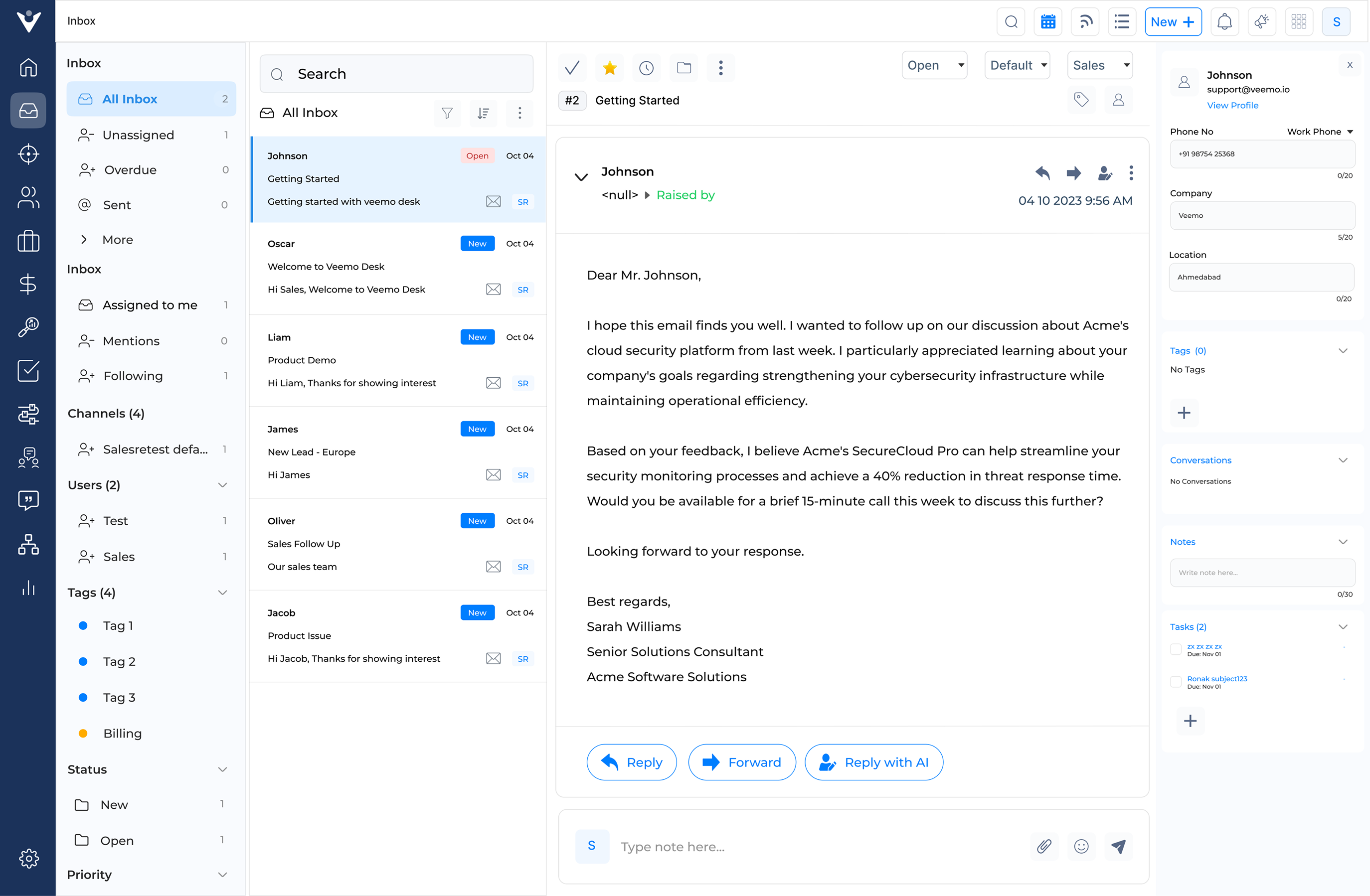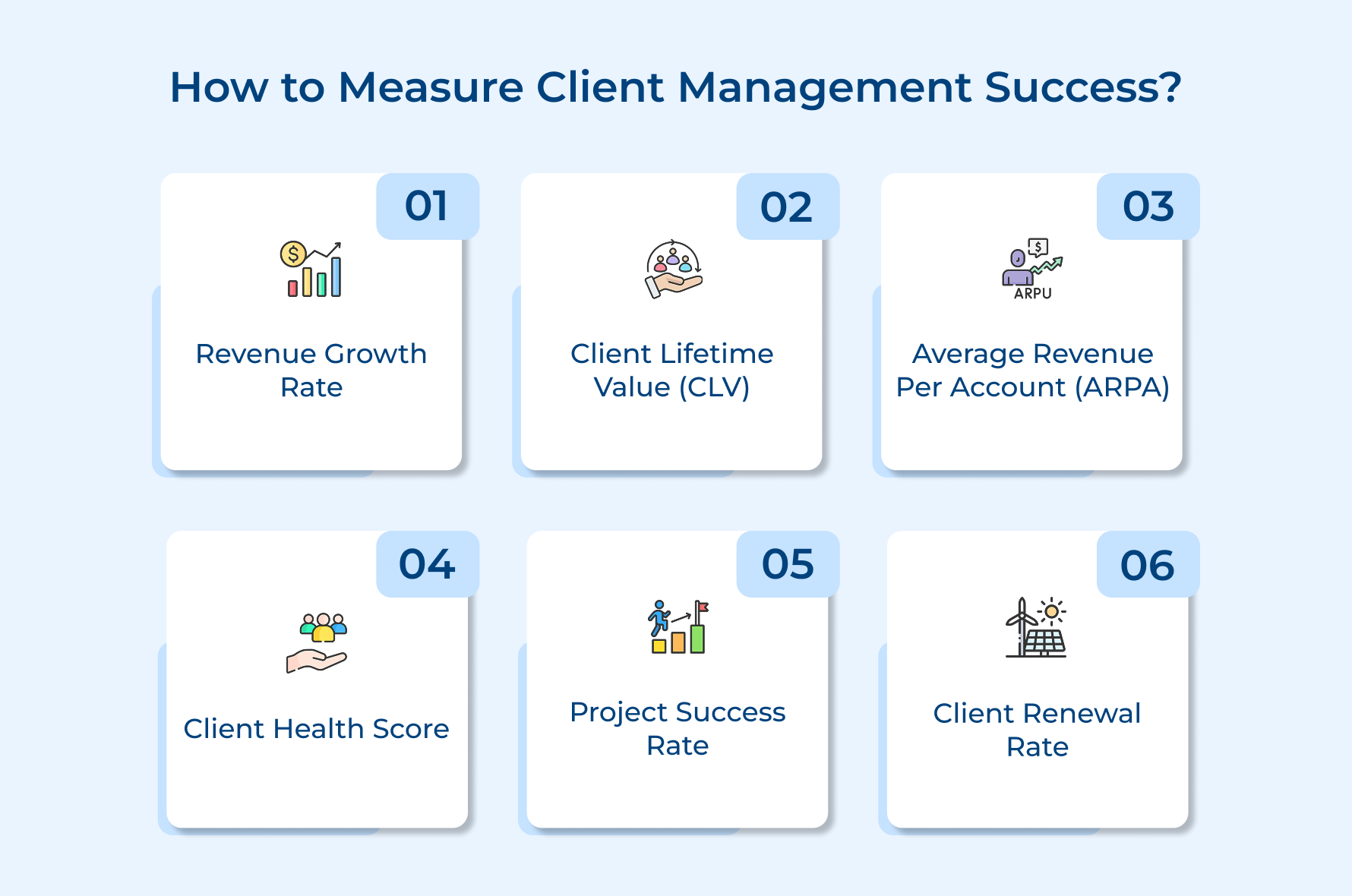1. Develop Strategic Account Planning
Developing strategic account planning is the foundation of client management. Learning your client’s business objectives and growth plans becomes fundamental for protecting revenue while also identifying expansion opportunities.
Start by segmenting accounts based on revenue potential and strategic importance. Create detailed account plans including stakeholder maps, growth opportunities, and risk assessments. Regular reviews ensure plans stay relevant as client needs evolve.
How to implement:
- Schedule quarterly account planning sessions with key stakeholders, assigning clear ownership for growth initiatives and risk mitigation.
- Create stakeholder influence maps identifying decision-makers and their business priorities, updating monthly for changing dynamics.
2. Establish Clear Service Excellence Standards
Clear benchmarks ensure repeatable excellence across all client engagements. Meanwhile, it also provides measurable criteria for team performance and client satisfaction.
Develop comprehensive service standards covering delivery quality, response times, and client interaction protocols. Implementing regular monitoring mechanisms ensures consistent adherence throughout all the teams.
How to implement:
- Create detailed service level agreements with specific, measurable metrics for each service type.
- Implement monthly quality audits reviewing random client engagements against established standards.
3. Offer Flexible Pricing Models
One-size-fits-all pricing no longer works. Modern clients expect pricing options aligned with their business models and value perception. It’s important to have various pricing models including fixed-fee, time-and-materials, value-based, and hybrid approaches.
The more pricing options a client receives, the better they will be able to make a decision. The trick here is to also explain the features that come along with each pricing structure. So, Prepare the models considering this perspective as well.
How to implement:
- Create pricing calculators incorporating value metrics and risk factors for consistent quote generation.
- Review pricing models quarterly against market trends and client feedback, adjusting as needed.
4. Standardize the Client Onboarding Process
First impressions matter. Chaotic starts leading to misaligned expectations and early relationship strain.
Structured onboarding ensures consistent client experiences while reducing ramp-up time and early relationship risks. It’s your chance to demonstrate professionalism and set proper expectations.
How to implement:
- Create digital onboarding checklists with automated task assignments and progress tracking.
- Schedule structured 30-60-90 day check-ins ensuring alignment with client expectations.
5. Document SOPs and Communication Guidelines
Clear communication protocols eliminate confusion and ensure consistent client interactions through client collaboration tools. Well-documented procedures reduce dependency on individuals while enabling scalable service delivery.
How to implement:
- Establish clear communication channels, response times, and escalation paths for various situations.
- Create a searchable knowledge base with regularly updated SOPs and best practices.
- Implement quarterly SOP reviews ensuring alignment with evolving client needs.
6. Collect Regular Client Feedback
You’re missing crucial insights about service perception and improvement opportunities without systematic feedback collection. Regular feedback enables proactive issue resolution and relationship strengthening.
How to implement:
- Schedule automated NPS surveys after key project milestones with immediate follow-up on low scores.
- Conduct quarterly voice-of-client sessions gathering detailed feedback on service experience.
7. Focus on Right Resource & Capacity Optimization
Proper resource optimization ensures right-fit talent delivery while preventing burnout and maintaining high utilization rates. It’s crucial for both service quality and profitability.
Start by implementing robust capacity planning tools for availability, and utilization. Create forward-looking resource forecasts aligning talent deployment with project demands and client expectations.
How to implement:
- Develop skills matrices mapping team capabilities to project requirements, updating quarterly.
- Implement rolling 12-week resource forecasting with weekly adjustment meetings.
8. Implement Workflows for Operational Efficiency
Manual processes kill efficiency and scalability. Inefficient operations increase costs and delay service delivery. Meanwhile, Automated workflows ensure consistent service delivery while reducing administrative overhead and human error. This is why many agencies rely on the best client portal software for agencies to streamline operations and cut down manual tasks.
Create standardized workflows for common processes including approvals, status updates, and deliverable reviews. Leverage automation tools to reduce manual intervention while maintaining quality controls.
How to implement:
- Map key processes identifying automation opportunities and implementing staged rollouts.
- Create workflow dashboards monitoring completion rates and identifying bottlenecks.
9. Measure Client Health Scores
Health scoring provides early warning systems for potential issues and identifies accounts needing additional attention. You’re guessing at relationship strength without objective health metrics, leading to missed opportunities and unexpected churn.
A robust health scoring system helps you gain valuable insights into client satisfaction, engagement levels as well as potential risks. This proactive approach allows you to address concerns early and improve retention rates.
How to implement:
- Create weighted health scores combining multiple metrics including NPS, utilization, and engagement levels.
- Schedule monthly health score reviews with action planning for at-risk accounts.
10. Implement Regular Business Reviews
Business reviews provide structured opportunities to demonstrate value and discuss future needs. It also strengthens relationships beyond day-to-day operations. The reviews uncover growth opportunities and address strategic challenges which can help to proactively manage clients at risk.
How to implement:
- Create standardized QBR templates ensuring comprehensive coverage of key business metrics and strategic initiatives.
- Schedule annual executive sponsorship reviews aligning service delivery with the client’s strategic objectives.
11. Leverage Tools for Better Outcomes
Modern client management requires a 360-degree view to enable efficient operations, provide valuable insights, and enhance client experience while scaling service delivery.
Implement comprehensive PSA platforms like Kooper to integrate client management, project delivery, resource management, and client communication in one unified platform to support operational efficiency.
How to implement:
- Conduct annual technology stack reviews ensuring alignment with business needs and market capabilities.
- Create integrated dashboards providing real-time visibility into key client and business metrics.
